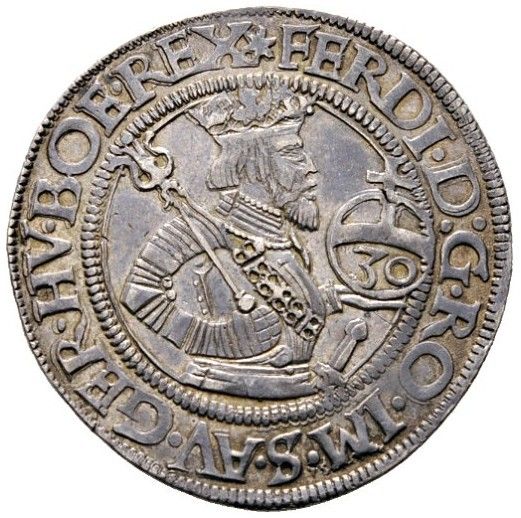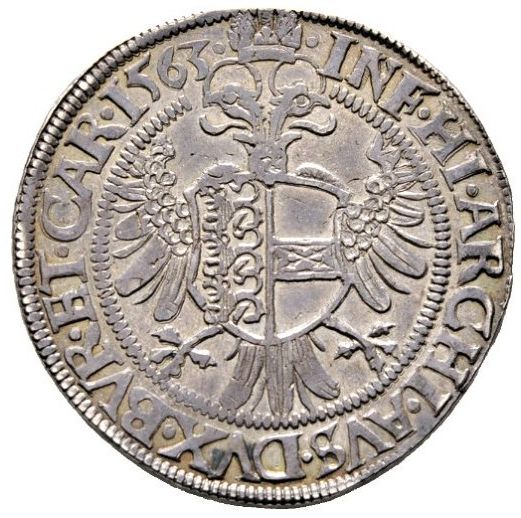Austrian Empire 30 Kreuzers ½ Guldenthaler - Ferdinand I (Klagenfurt)
Introduction
The 30 Kreuzers ½ Guldenthaler coin from the Austrian Empire, minted during the reign of Ferdinand I, holds a significant place in numismatic history. This silver coin, issued between 1561 and 1563 in Klagenfurt, showcases exquisite craftsmanship and historical importance.
Historical Background
During the mid-16th century, the Austrian Empire, under the rule of Ferdinand I, issued the 30 Kreuzers coin as part of its monetary system. The coinage reflected the economic and political landscape of the era, symbolizing the power and authority of the Habsburg dynasty.
Coin Images
 Obverse
Obverse
 Reverse
Reverse
Design Features
The obverse of the coin features a bearded portrait of Ferdinand I, clad in armor and facing right. Holding a scepter in his right hand and an orb with the value inscribed in his left, the intricate details capture the essence of royalty. The continuous legend surrounding the portrait adds a touch of elegance to the design. On the reverse side, a double-headed imperial eagle, adorned with halos, proudly displays a shield of Carinthia (Kärnten) on its breast. The detailed craftsmanship of the eagle, with a crown dividing the legend and the date at the end, exudes a sense of imperial grandeur.
Technical Specifications
- Denomination: 30 Kreuzers
- Issuing Authority: Austrian Empire
- Composition: Silver
- Weight: 12.00g
- Diameter: 31.00mm
- Minted in: Klagenfurt
- Period: 1561-1563
Collectible Value
The Austrian Empire's 30 Kreuzers coin featuring Ferdinand I is highly sought after by collectors due to its historical significance and intricate design. Its rarity and connection to the Habsburg dynasty contribute to its value in the numismatic market. Collectors often treasure this coin for its unique representation of the era and the craftsmanship of the minting process.
Conclusion
In conclusion, the Austrian Empire's 30 Kreuzers ½ Guldenthaler coin, minted under Ferdinand I, stands as a testament to the artistry and historical importance of numismatics. With its intricate design, historical significance, and collectible value, this coin remains a prized possession for both collectors and enthusiasts of historical currency. By delving into the details of this coin, one can uncover a fascinating chapter of the Austrian Empire's numismatic heritage and appreciate the craftsmanship that went into creating such a remarkable piece of history.

